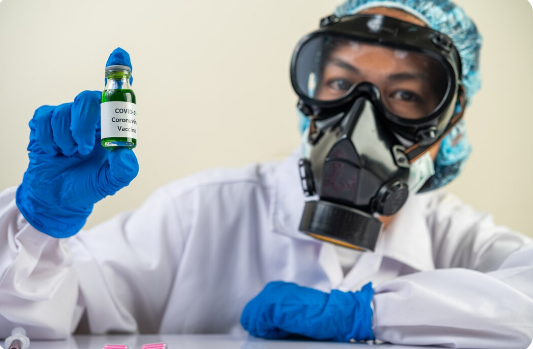In the age of heightened hygiene, isopropyl alcohol (IPA) has become a household hero. Found in hand sanitizers, medical wipes, and cleaning sprays, it’s praised for its ability to kill germs on contact. But how does it compare to other disinfectants like bleach, hydrogen peroxide, or quaternary ammonium compounds (quats)? Science tells a fascinating story, one of chemistry, speed, and precision.
How Isopropyl Alcohol Works
Isopropyl alcohol kills microorganisms by denaturing proteins and dissolving lipids, essentially breaking down the cell walls of bacteria and the envelopes of certain viruses. The key lies in its concentration: 70% IPA is more effective than 100% because water slows evaporation, allowing longer contact time and better penetration into microbial cells.
Within 30 seconds, 70% isopropyl alcohol can destroy most bacteria and many viruses including E. coli, Staphylococcus aureus, and Influenza A. However, it’s less effective against spores and non-enveloped viruses like norovirus.
Isopropyl Alcohol vs Other Disinfectants
1. Ethanol (Ethyl Alcohol)
Ethanol and IPA are chemical cousins. Ethanol is slightly better against viruses, while IPA is superior against bacteria. Ethanol-based sanitizers are favored for skin use due to lower irritation, while IPA dominates in hospitals for surface sterilization and instrument cleaning.
2. Hydrogen Peroxide
Hydrogen peroxide works by releasing oxygen radicals that oxidize microbial structures. It’s powerful against bacteria, viruses, and even spores — an area where alcohol struggles. However, peroxide is slower and can damage delicate surfaces or fabrics. IPA, by contrast, is fast-acting, residue-free, and evaporates cleanly.
3. Bleach (Sodium Hypochlorite)
Bleach remains the heavyweight disinfectant, capable of killing spores, fungi, and mycobacteria that resist alcohol. But it’s highly corrosive, releases toxic fumes, and can cause skin burns. IPA offers a safer, faster option for general disinfection, though it can’t match bleach in sterilising power.
4. Quaternary Ammonium Compounds (Quats)
Quats are commonly used in hospitals and cleaning products for their residual activity, they keep killing microbes long after application. However, they are less effective against non-enveloped viruses and may cause allergic reactions. IPA kills on contact but evaporates quickly, making it better for rapid disinfection rather than long-term protection.
When Isopropyl Alcohol Isn’t Enough
IPA has limitations. It’s ineffective on dirty or greasy surfaces, doesn’t kill bacterial spores, and evaporates too quickly to provide lasting protection. For high-risk environments, pairing alcohol with other agents, like hydrogen peroxide or quats, provides broader coverage.
The Verdict: Fast, Efficient, and Reliable
Science confirms that isopropyl alcohol is one of the most efficient and accessible disinfectants available. It offers near-instant germicidal action, leaves no residue, and is safe on most surfaces. However, no single disinfectant is perfect. The best strategy is situational cleaning, using IPA for everyday sanitizing and stronger agents for deep sterilization.













